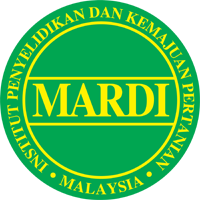C. Devendra and T. Lee Kok Choo
Abstract
This paper represents part three concerning further studies on Kedah-Kelantan cattle and presents critical information on the body composition and carcass characteristics of 6 Kedah-Kelantan heifers about 22 months old and weighing about 188 to 240 kg. Results are presented on carcass characteristics due to feeding Napier grass (Pennisetum purpureum) together with 40, 60 and 80% tapioca (Manihot utilissima Pohl) in the ratio of 3:1 for 490 days. The data presented included 16 body, composition characteristics,19 gastrointestinal measurements and 13 individual meat cuts. The mean live weight at slaughter ranged from 188.7 to 210.7 kg., hot carcass weigh from 95.5 to 109.9 kg. and dressing percentage 50.5 to 54.8. The total gut contents ranged from 51.7 to 63.0 kg. and as percentage of slaughter weight 27.8 to 32.0%. Treatments had statistically significant effects (P<0.05) only on dressing percentage, weight of the clean stomach and in the cuts only for the neck and round. All other parameters measured were not affected by treatments. The mean weight of meat was 88.3 kg. and meat as a percentage of carcass and slaughter weights were 82.6 and 46.4% respectively. The mean meat:bone ratio was 5.4. Increasing D.M.l., consistent with increasing intake of energy in the concentrate diet increased the fat content of the carcass,notably mesenteric fat. Grade one and two cuts accounted for a mean weight of 86.7 kg. or 82.7% and 18.2 kg. or 17.3% of the carcass respectively. The significance of improved nutrition on carcass characteristics and on cuts of the carcass in the context of edible meat content, consumer preferences and retail value is discussed.
Full Text ( 500 KB )








